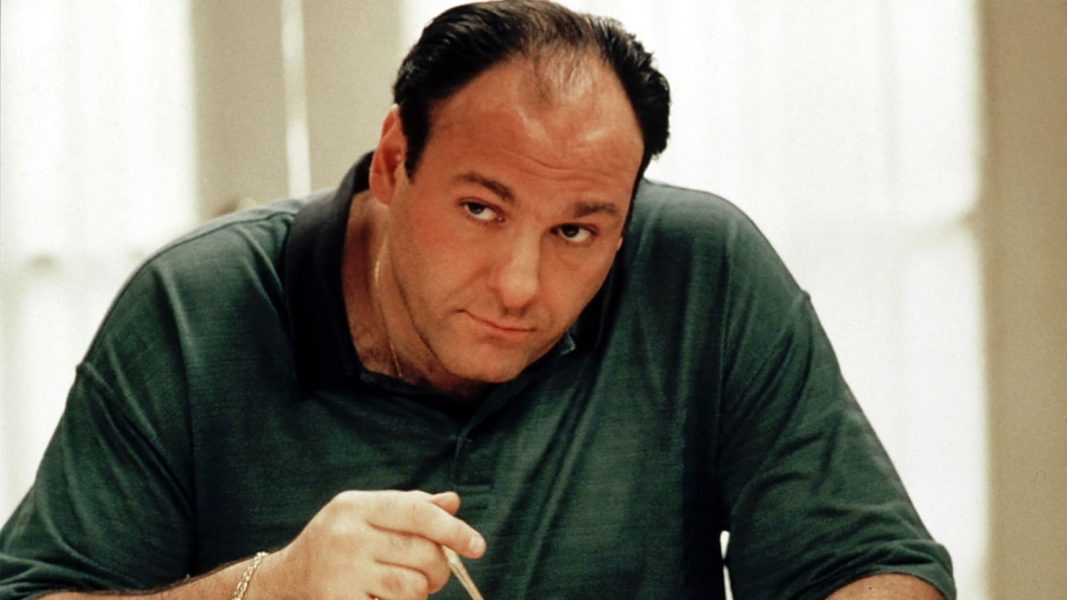I’ve always maintained that The Sopranos is one of the greatest television shows. I’d have called it the greatest, but this man named Vince Gilligan went and made Breaking Bad. Actually, I am still torn between the two. But I’m a discursive person at the very least, so I shall take this opportunity to try and explain the ending of the show in an attempt to highlight why The Sopranos is, to me, one the greatest television shows.
The story follows a New Jersey mob boss who has to deal with his families, mob and social, and tackle depression at the same time. A man who appears to have everything including control over life and death of those around him, Tony is not a happy man. He is forever anxious and his frequent panic attacks show that – he is always looking over his shoulder, afraid of the law, rival families.
In this context of Tony’s character, we can look to the final scene of the show titled – Made in America. David Chase has been quizzed about the final episode forever, fans of the show have gone berserk over the show’s abrupt ending. There’s a running joke that people thought their televisions had lost power or the line had been disconnected. Anyhow, the way I’ll approach it is to give a brief description of the ending and a series of possible interpretations before adding the one I think is most possible.
Made In America
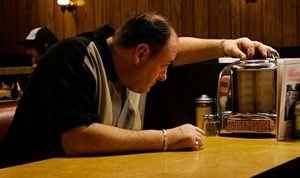 Chase himself has commented that the entire last episode has paled to the final moments of the show which is what we shall be looking at here – Tony and his family are to meet at a diner, one of those all American diners where you can put a coin in and music plays. Tony arrives first followed by his wife Carmela. They share a plate of onion rings as they idly discuss Tony’s business. Their son AJ arrives soon after. The family is almost reunited now – the Sopranos is no longer a crime family, they are an average American family that is seeking comfort in onion rings and each other. Don’t stop believing by Journey starts playing and the song choice is specifically significant in the context of the scene.
Chase himself has commented that the entire last episode has paled to the final moments of the show which is what we shall be looking at here – Tony and his family are to meet at a diner, one of those all American diners where you can put a coin in and music plays. Tony arrives first followed by his wife Carmela. They share a plate of onion rings as they idly discuss Tony’s business. Their son AJ arrives soon after. The family is almost reunited now – the Sopranos is no longer a crime family, they are an average American family that is seeking comfort in onion rings and each other. Don’t stop believing by Journey starts playing and the song choice is specifically significant in the context of the scene.
As they wait for Meadow their daughter, the tension in the scene picks up. Every time the doorbell rings, Tony looks up, the anticipation and palpable tension in the scene intensifies throughout. Chase purposely includes a track-shot of a shifty character going into the washroom. Meadow’s difficulty in parallel parking forms an aligned plot line and as she rushes to meet her family, the doorbell rings for the last time. Tony looks up quizzically and the screen goes black.
Meta Middle Finger
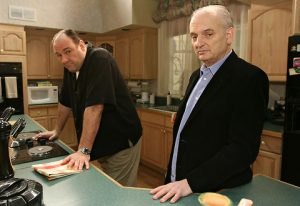
The most obvious explanation is also a very complex explanation of the ending of the television show. It explains why plenty of fans are dissatisfied and even angry with the ending. They thought that Chase was being too smart with them, being too postmodernist. Fans for a large part decided to delve into the academic rabbit hole of postmodernism and believe that Chase was having a laugh at them, showing them so to speak the middle finger, invisible in the moments of darkness on screen, before the credits rolled. The accusation of being meta and reminding fans that this is a television show after all and it ends, is something that Chase himself has denied but as far as explanations go, this holds water and is valid as a possible ending by a creator in his prime, who had to prove that he was smarter than his audiences, the perfect absolute creator.
Living Just to Find Emotion
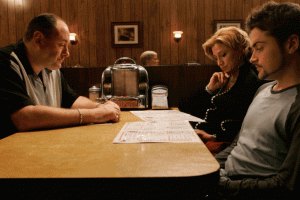
Don’t Stop Believing plays almost throughout the entire last scene in The Sopranos. The song becomes especially significant if one looks at Chase’s own explanations of the scene and the message of hope he has always harped on. Perhaps Chase was being overly optimistic but he wanted to give the mob boss a chance at life – a chance at happiness. For someone who was always looking over his shoulder and as his wife commented at one time – a man with a piano hanging by a rope over his head – the diner reunion was a moment of bliss. Tony, for once, was not a mob boss but a family man.
An American family chasing an American dream of success – a dream that Tony had already achieved in his way. The song then asks to not stop believing, to keep looking for happiness and Tony does that. He is not very happy when he has to give and take life, crime pays materialistically but destroys his peace of mind. However, Tony redeems himself through his love for his family and his desire to keep them together at all costs. Meadow’s rushing towards the diner then, the final bell and the last look at Tony’s eyes before it turns black is then an episodic break in our viewing of the Sopranos’ lives. Tony might end up dead another day, or end up in the slammer. But for the moment, he is happy and that’s where Chase leaves us. If that is indeed the aesthetic of the finishing scene then I cannot help but draw a parallel to a recent movie that has become an instant hit with me – ‘Three Billboards Outside ebbing, Missouri’ where the movie ends on a similar note where the woman looks at the cop as they are about to probably commit an act of vigilantism and as she is about to say something the screen cuts to black.
The episodic aesthetic aside, of life, goes on – and we must look for happiness. This is not only ensconced in the choice of song but also confirmed by Chase in an interview where he says, and I quote – “I said it’s a cold universe and I don’t mean that metaphorically. If you go out into space, it’s cold. It’s really cold and we don’t know what’s up there. We happen to be in this little pocket where there’s a sun. What have we got except love and each other to guard against all that isolation and loneliness?” Tony then looks lovingly at his daughter as she enters the diner, a quintessential symbol of the American family gathering and the show leaves it at that.
Back to Black
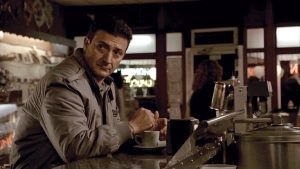
The previous interpretation which has largely been supported by Chase over various interviews leaves certain aspects of the scene unanswered. The building up of tension, the deliberate delay in parking and the shifty man in the Members Only jacket. Chase may have said that the deliberate building of tension was to show the anxiety that was part of Tony’s everyday life – a chance that he might lose everything in one go, and as far as anxiety is portrayed on screen it was almost as brilliant as Scorsese’s hectic Henry Hill run in the claustrophobic surveillance and police chase.
However, what was the point of the delay in parking, the shifty man checking out Tony’s seating position and clocking angles, the deliberate walk to the washroom where the camera tracks him, his exit from the washroom at the same moment that the bell rings and Tony looks up – the other theory is that Tony is killed. The man in the Members Only jacket, a jacket worn by a member whose death was caused by Tony, was the hitman. However, if the death of a mob boss is never shown then it is not as sensational perhaps. Tony doesn’t die in a hail of bullets like Sonny Corleone at a toll booth.
Tony’s death, if it is a death at all comes subtly but absolutely. If we are to follow camera angles, every entry into the diner is marked with Tony’s point of view before the person is actually shown. Except for Meadow, when she is about to enter, the man walks out of the washroom and the screen goes to black. How a shift in perspective could go to absolute blackness is difficult to fathom unless one makes a chance for the possibility that perspective has ceased to exist since Tony Soprano has ceased to exist. This is highly likely and explains why Meadow’s parallel parking trouble becomes significant. If Meadow had been in the diner she would be seated next to Tony and the hitman leaving the washroom would not have had a clear shot at Tony and as the show itself tells us – family members would not come to any harm. All this goes to support the theory that Tony does die at the end of the show.
Coda
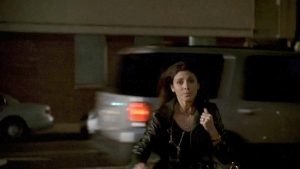
The last episode then has these following interpretations. I am likely to side with Chase’s first comment on the ending before years of persistent interviewing wore him down and he rushed to provide explanations. Chase’s first enigmatic comment about it all being there, in the last scene of the show is what I agree with. It is a master craftsman telling us subtly that it is a television show and ultimately he controls when it ends, but it is also a hopeful creator who infuses the same hope in a mob boss who got under many of our skins. But the interpretation that I like to go with the most is despite these aspects, Tony does die in the last scene because of a simple reason is Tony’s lingering perspective is mirrored in the music continuing through the credit sequence of every episode, except for the last episode where the music ends abruptly and the credits roll in ominous silence.
The resounding darkness and silence signify perhaps the removal of Tony Soprano’s perspective from our world of perceptions and the song finally ends for a mob boss, a family man who never really stopped believing.
Read More: Westworld Ending, Explained

